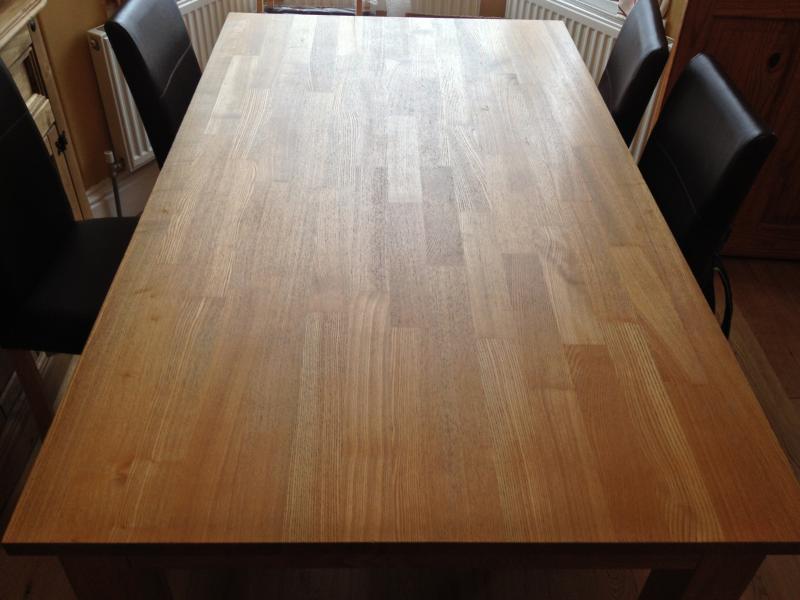First a warning, I'm an amateur who has refinished two Ercol tables, and I'm in the middle of doing an Ercol chest of drawers, so I am no authority, just giving experience. That said, the plank dining table and round coffee table, both 50's designs, now look like new, gorgeous.
A solid wood table top is very easy to refinish, because it is flat, with no veneer to wear through. I use a power sander, one of these:
http://www.amazon.co.uk/Bosch-PSS-2...76816944&sr=1-1&keywords=bosch+orbital+sander
I'm not saying it is the best, but it works. It takes sheet sand paper, which is inexpensive. I might start with 80 grade to get the top layer of finish off, but it is VERY coarse. Then grade 120. I'd start with grade 120 and see how it goes. Then 240 grade, then 400 grade for finishing. I tend to finish by hand, using a sanding block and sanding paper.
However, some finishes rapidly clog sandpaper, and a stripper such as Nitromors might be quicker, albeit pricey. The Wilko Eco stuff is cheap, and seems to work well (depending on the finish), but you have to leave it on for a few hours. And it contains water, and my concern is that it might cause warping. (I've warped a table top before, so I am wary of water on wood.)
I've never used a belt sander, I'd be concerned about taking off too much wood. Anyway, the sander I have works just fine.
You might come across dents and deep scratches. Once you have rough sanded the top, spit on the dents, and leave. The wood expands. If the first go did not work, do it again, and again, and again. I've removed some nasty damage with spit. If that does not work, you can fill with a mix of wood dust (from sanding) and wood glue, the UHU stuff for example. Two part filler does not take stain, and looks bad. The one part filler, by Cuprinol et al, never matches, and stains poorly. Alternatively, once the table is sanded and stained, fill dings with wax. You can buy wax sticks. (I've never done that, spit and wood dust with wood glue have served me well.) Or leave dings as 'character'.
For finishing, perhaps the easiest is an oil such as Danish Oil, which gives a satin look, followed by a wax, to give a nice high shine. I have no experience of other finishes, except paint.
Obviously you need to do this in a garage or a workshop, and put down loads of newspaper, or old towels beneath the top to prevent scratches.



